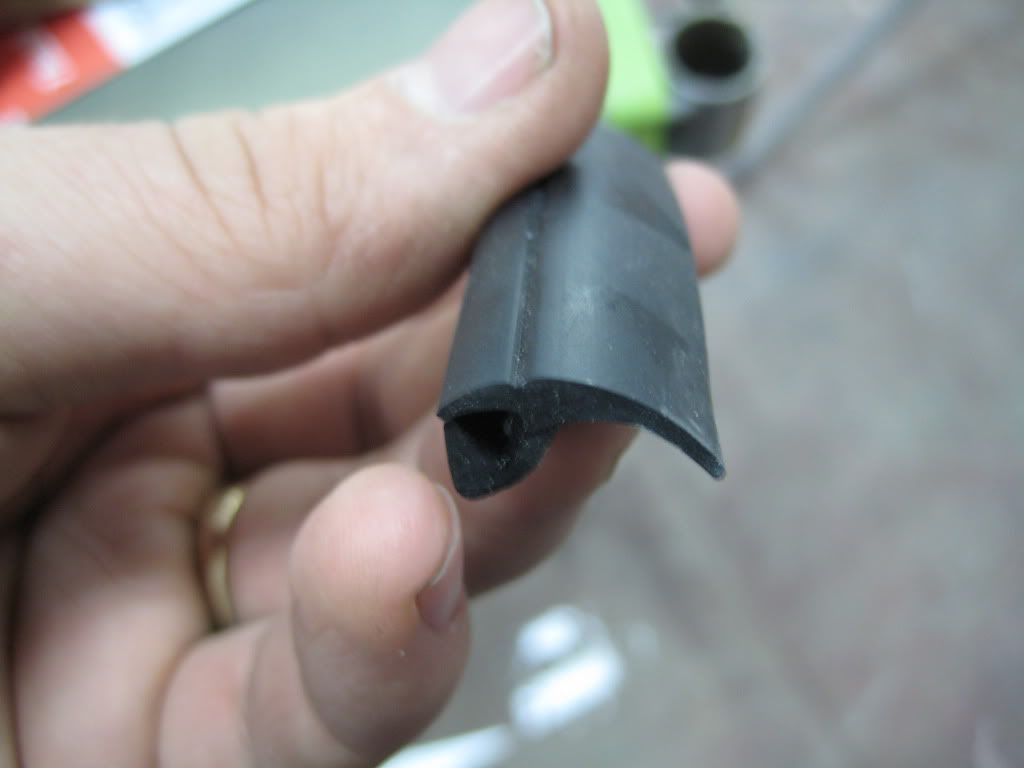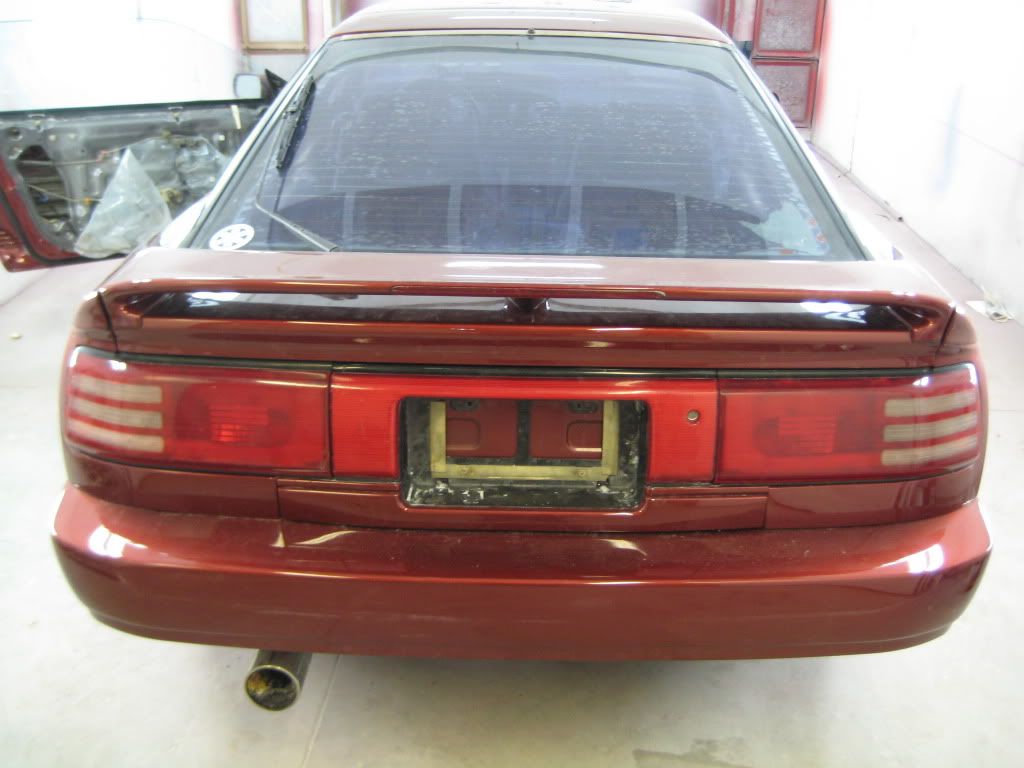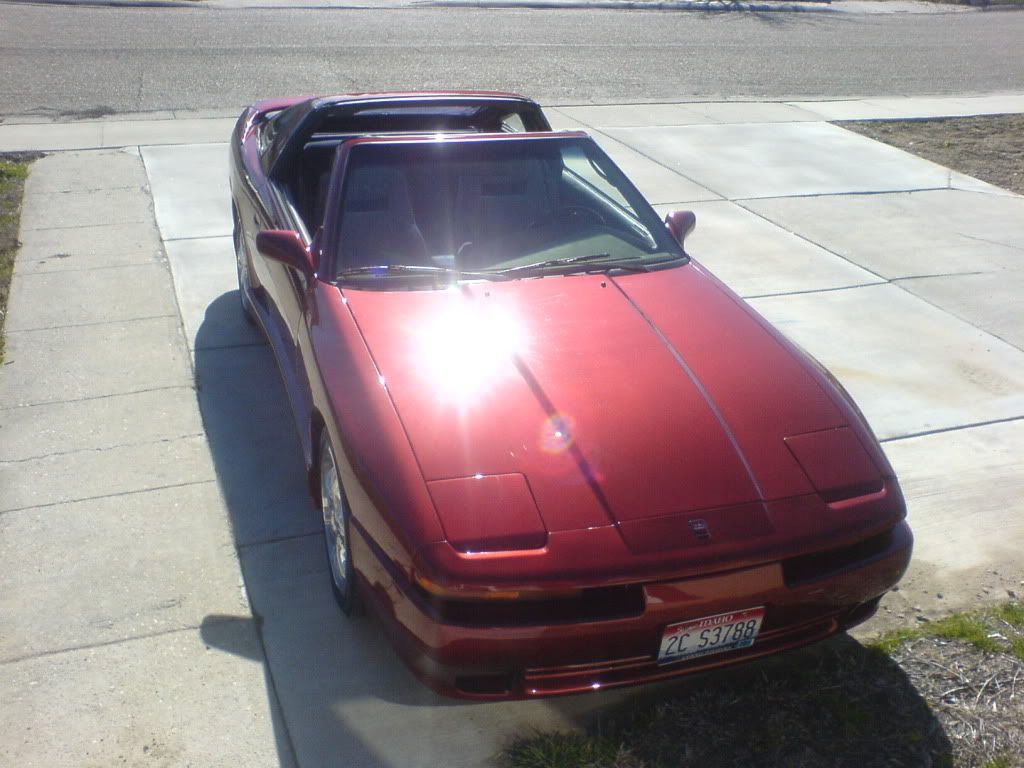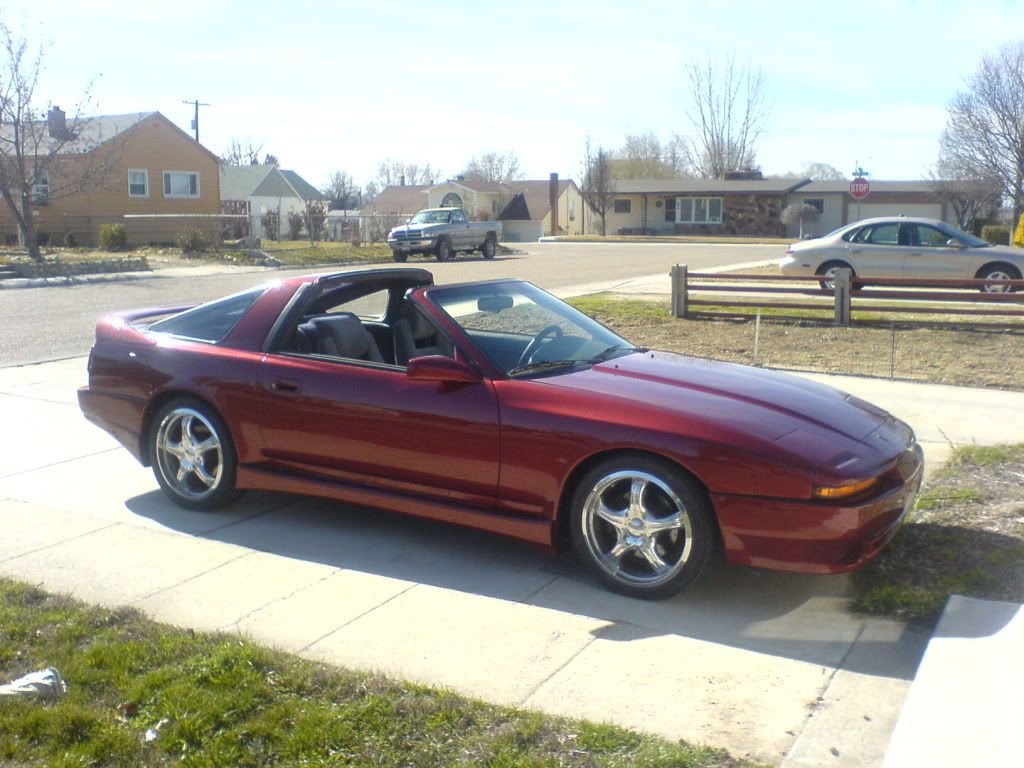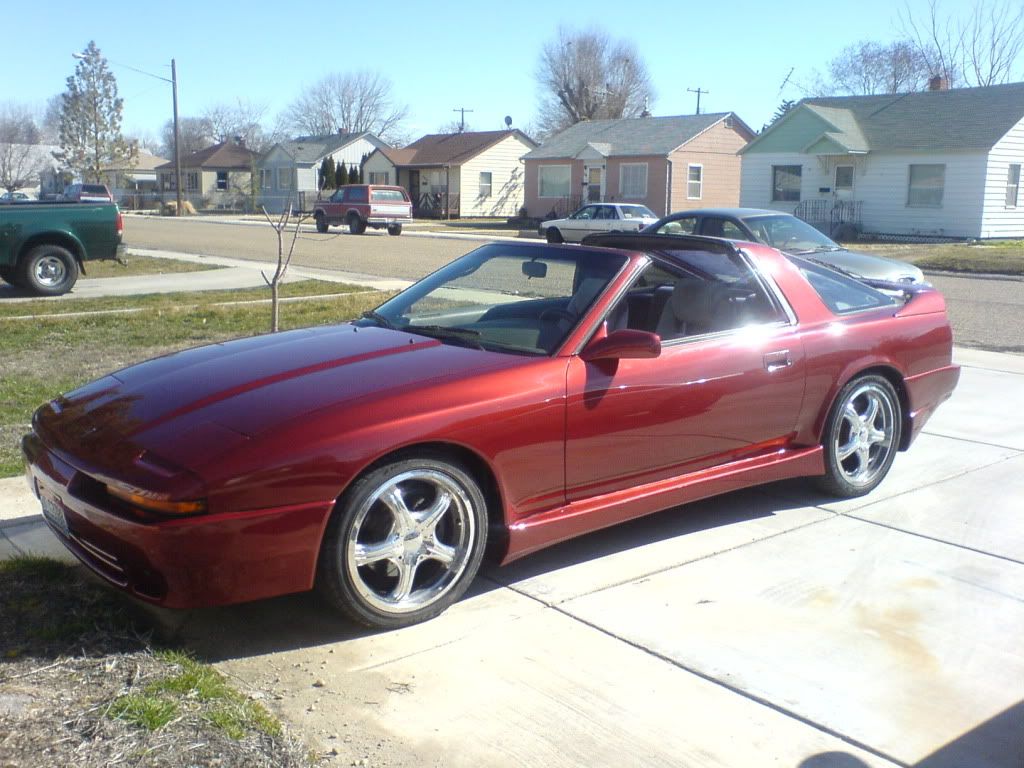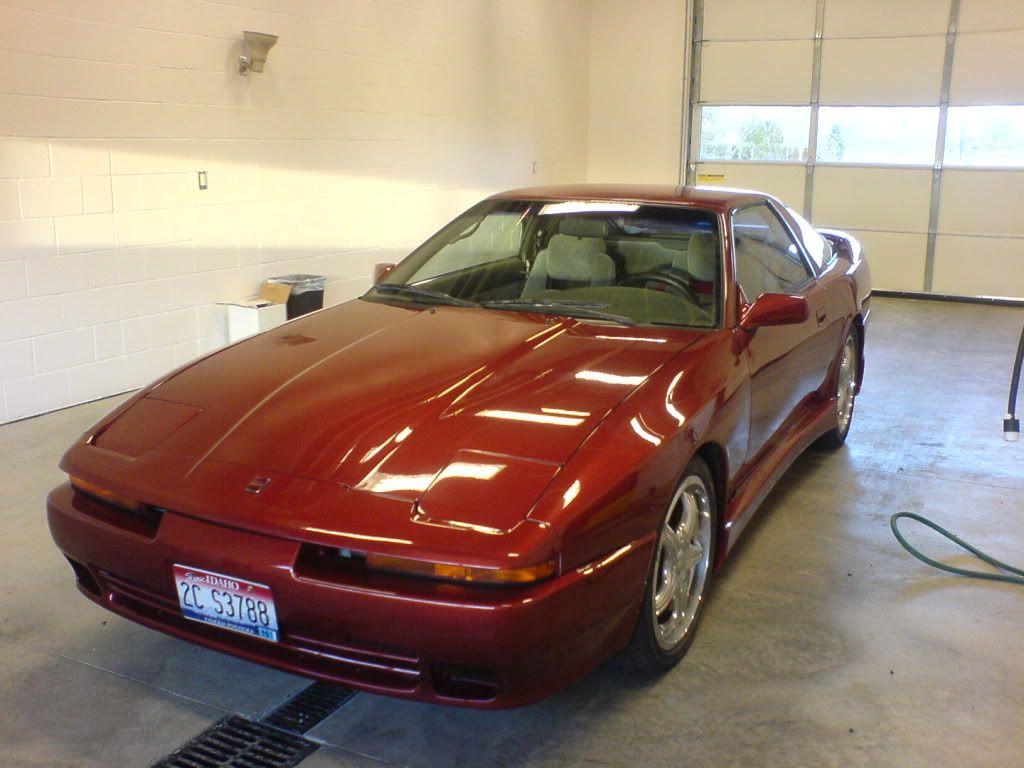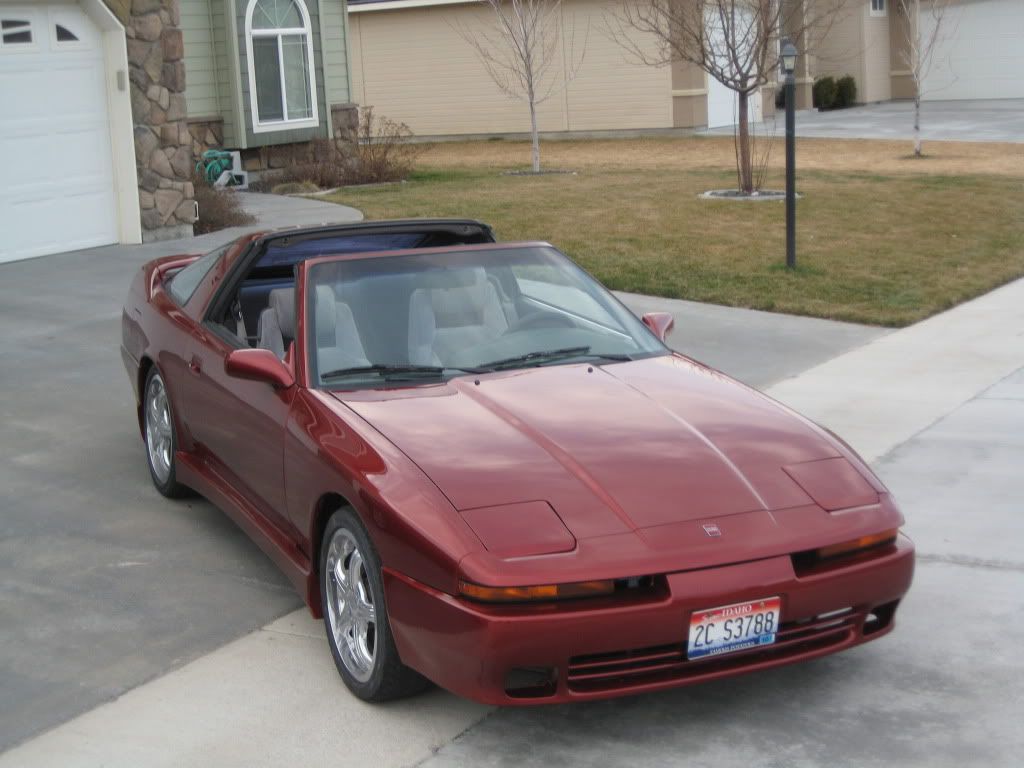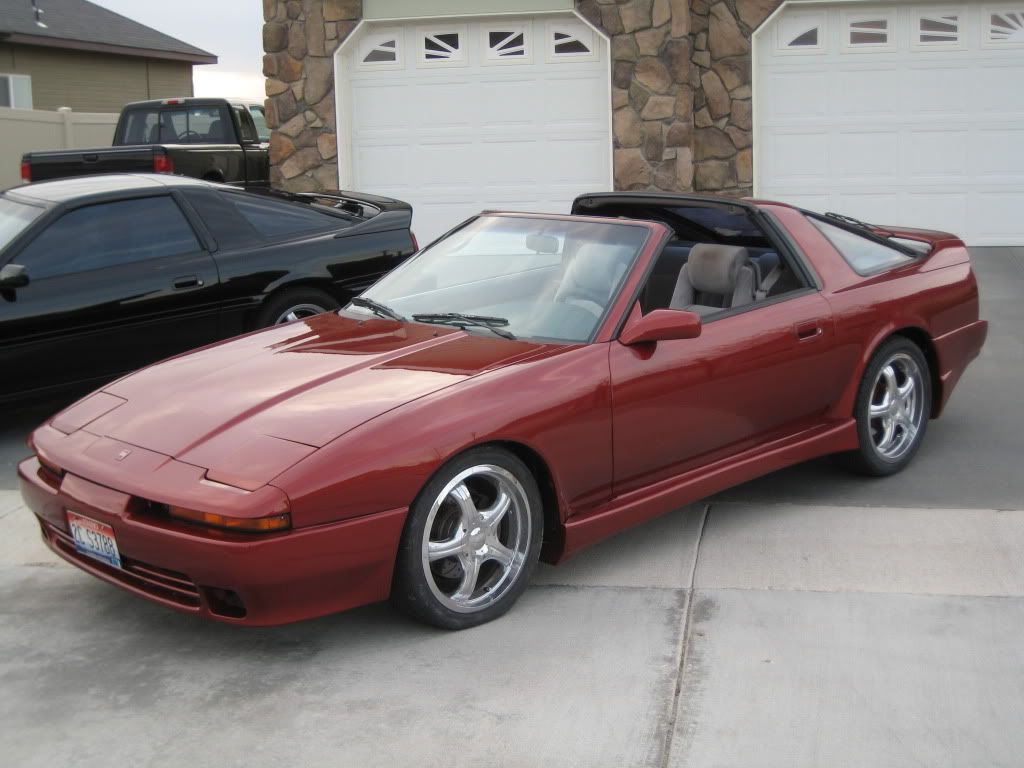Check it out, quality shave and color change...Body work is finished!
- Thread starter Kalos
- Start date
You are using an out of date browser. It may not display this or other websites correctly.
You should upgrade or use an alternative browser.
You should upgrade or use an alternative browser.
Well, the interior is back together, and we started to polish the paint last week. It's a little disconcerting to see just how many screws and bolts I still have left over...
Here are some pics
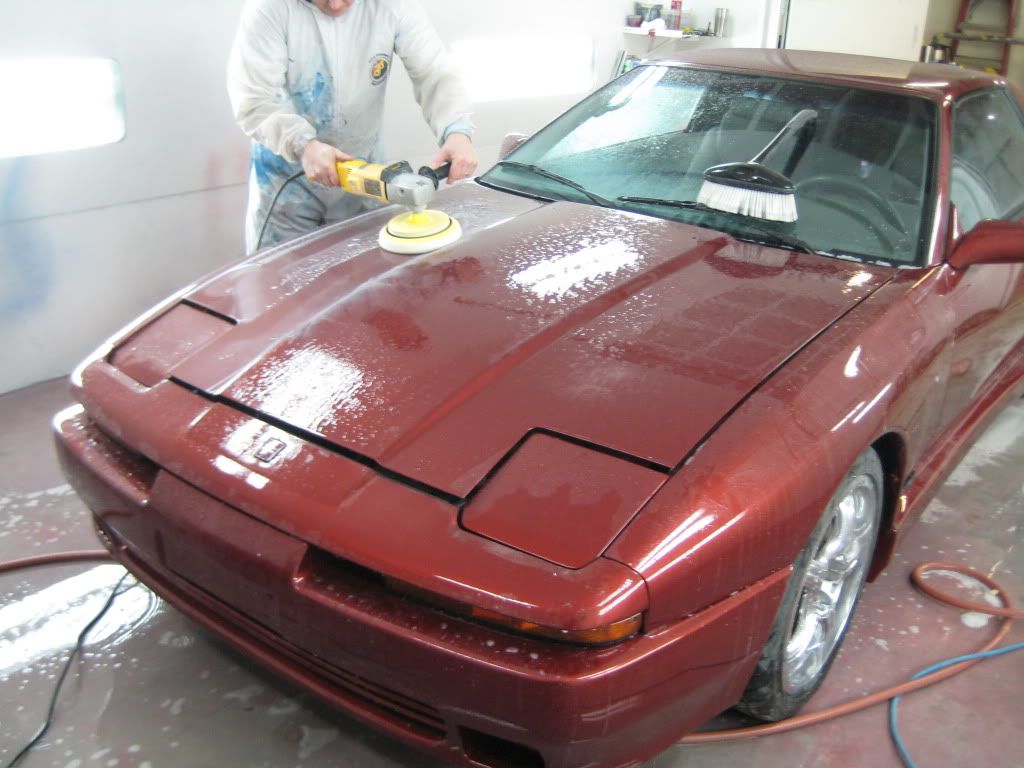
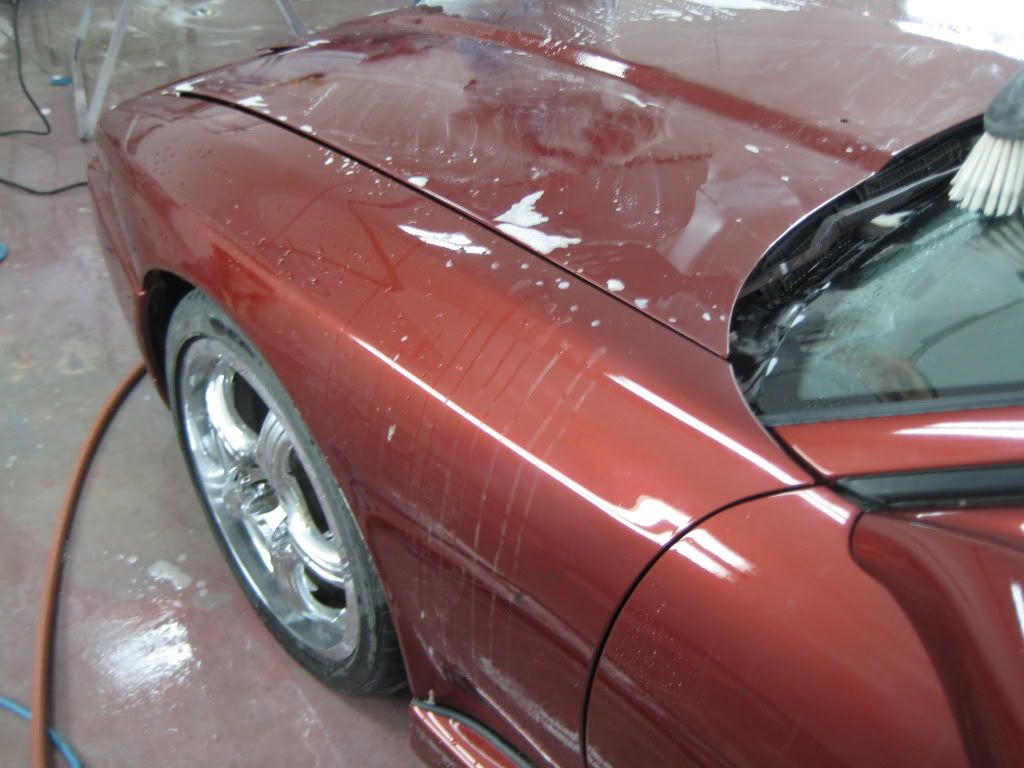
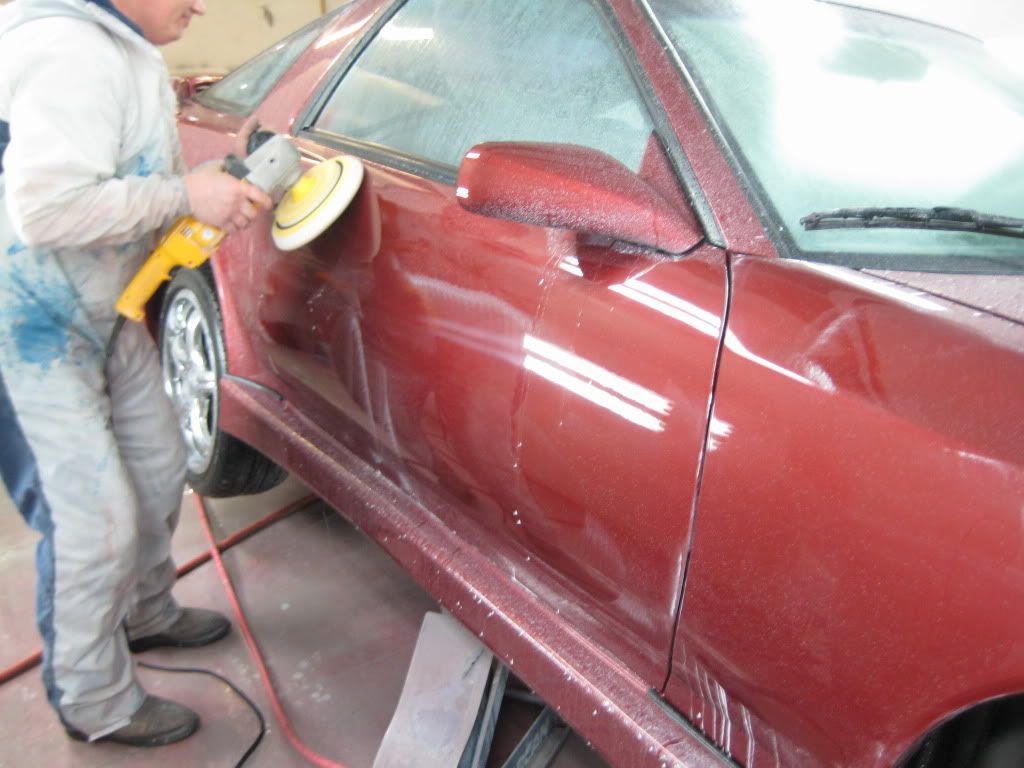
Now I am working on my LED tail lights. I ordered 500 superflux LEDs from superbrightleds.com, and they came in last week. And no, I'm not planning on using all 500 in the taillights, I just wanted some extras.
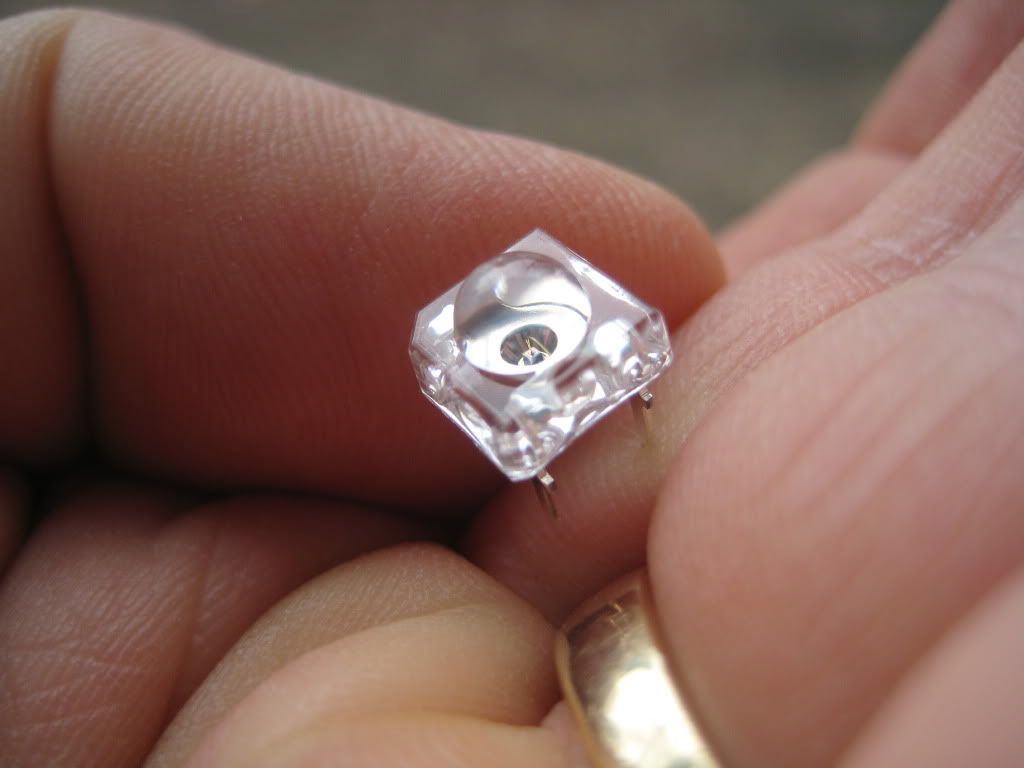
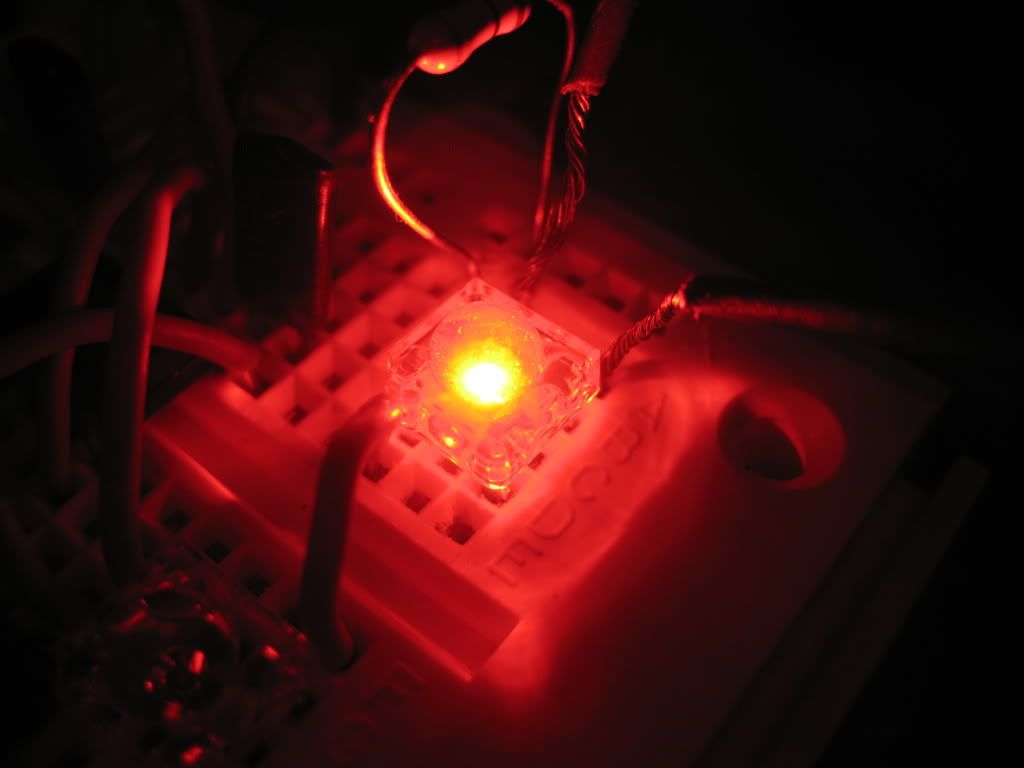
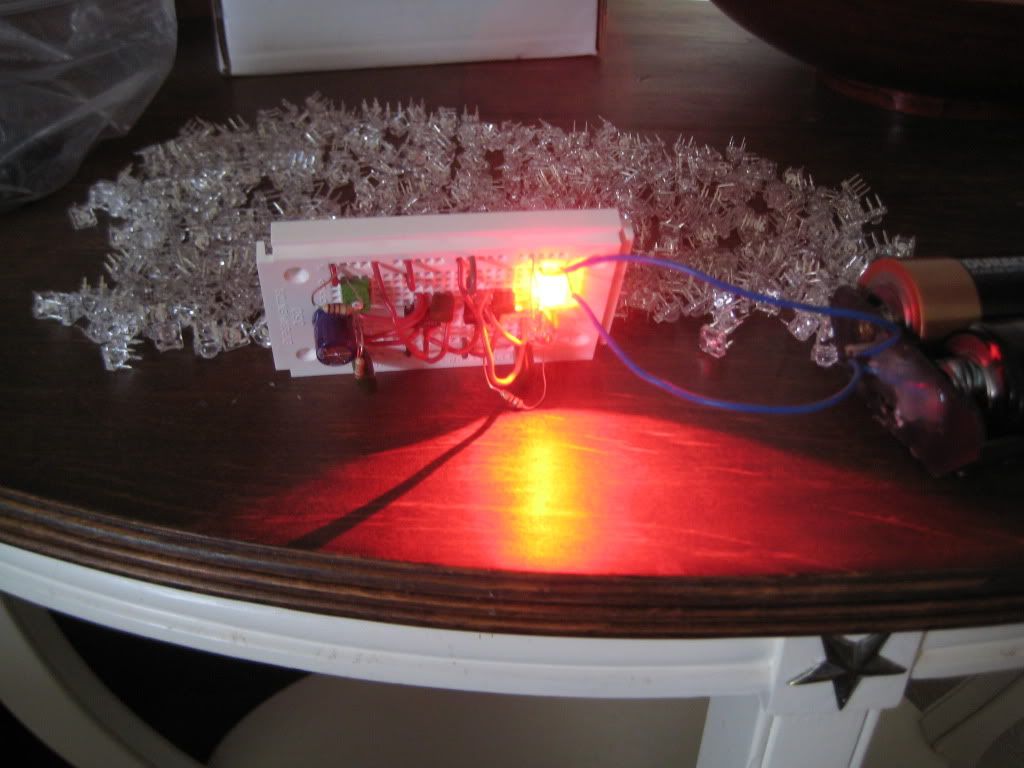
I'm taking my time with the design and playing with a lot of different options before I do anything permanent. The leds are VERY bright (as we've all been hearing) so I'm quadrupling the value of the resistors I use in each series and it still may be too bright for road use.
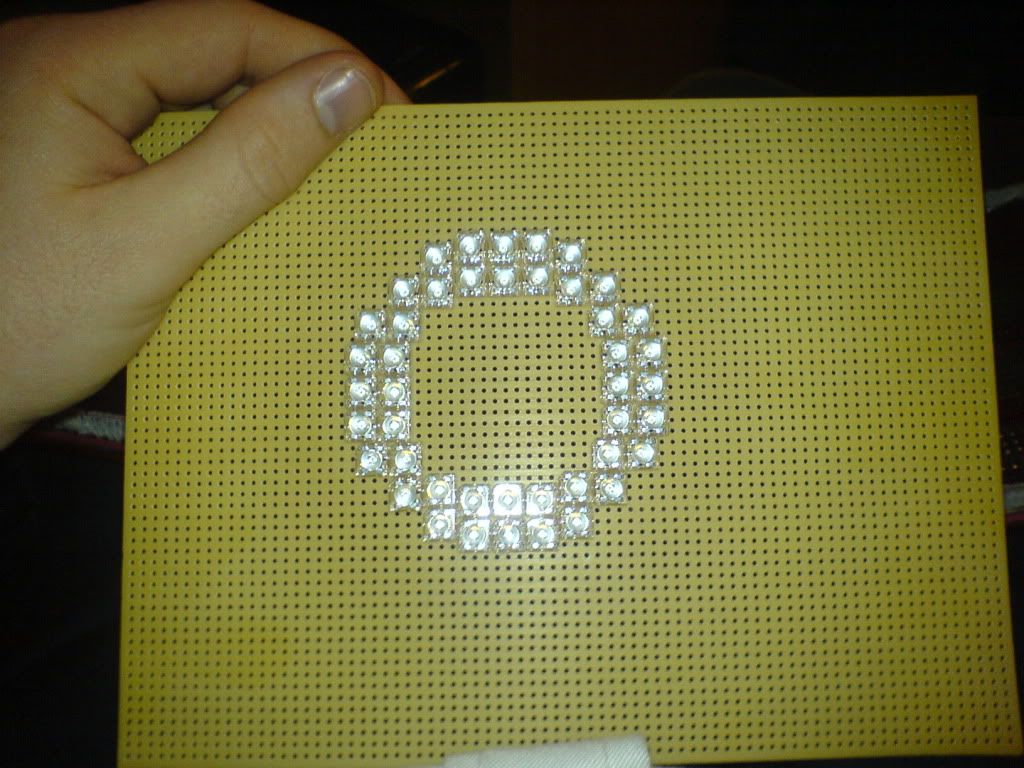
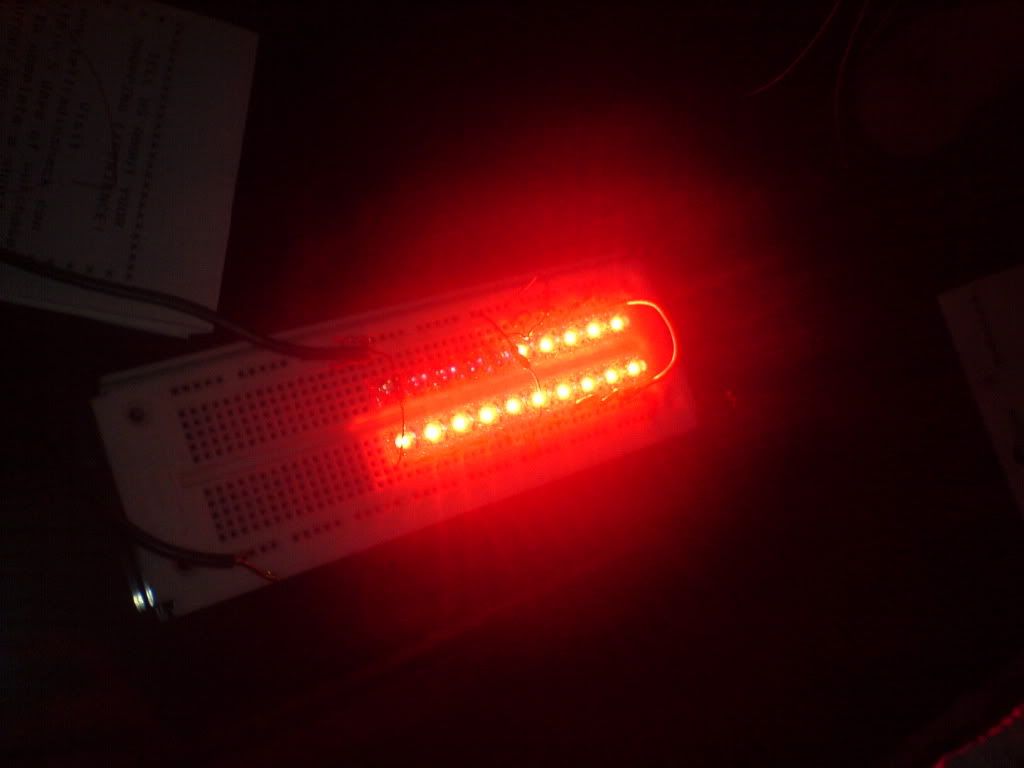
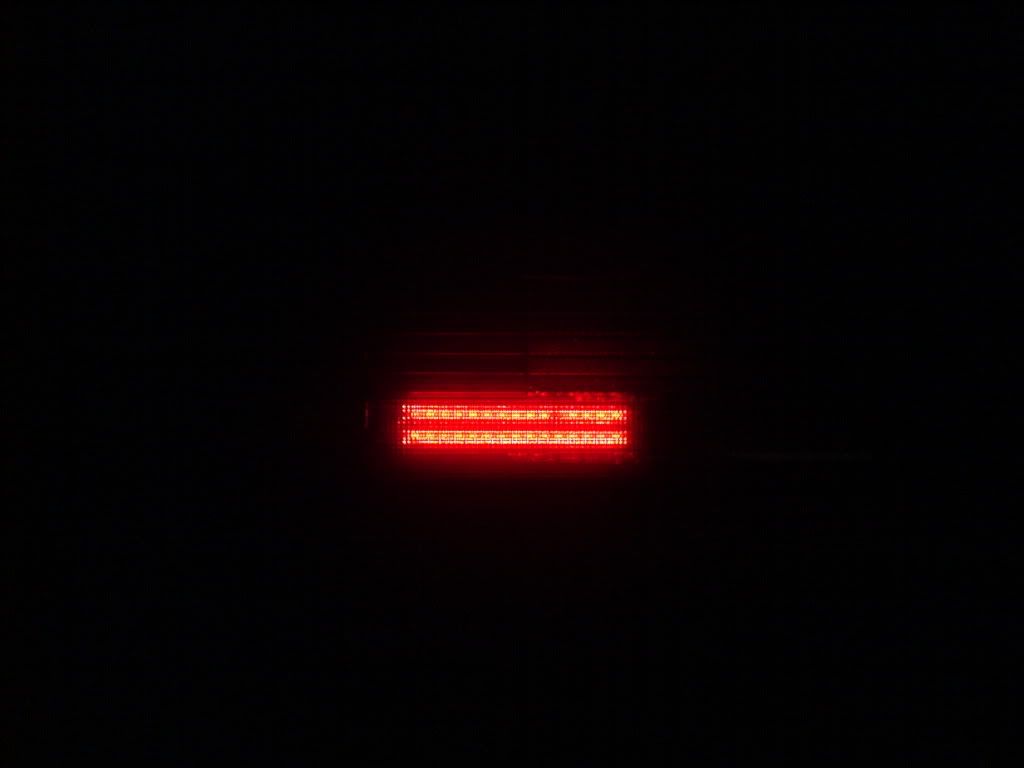

The last two pics are of the same LEDs in the same setup, just with different camera settings...
Here are some pics



Now I am working on my LED tail lights. I ordered 500 superflux LEDs from superbrightleds.com, and they came in last week. And no, I'm not planning on using all 500 in the taillights, I just wanted some extras.



I'm taking my time with the design and playing with a lot of different options before I do anything permanent. The leds are VERY bright (as we've all been hearing) so I'm quadrupling the value of the resistors I use in each series and it still may be too bright for road use.




The last two pics are of the same LEDs in the same setup, just with different camera settings...
The body work is all done! I drove her home yesterday and took a few pictures too. Unfortunately it was very overcast, so I will post better pictures later, but for now....
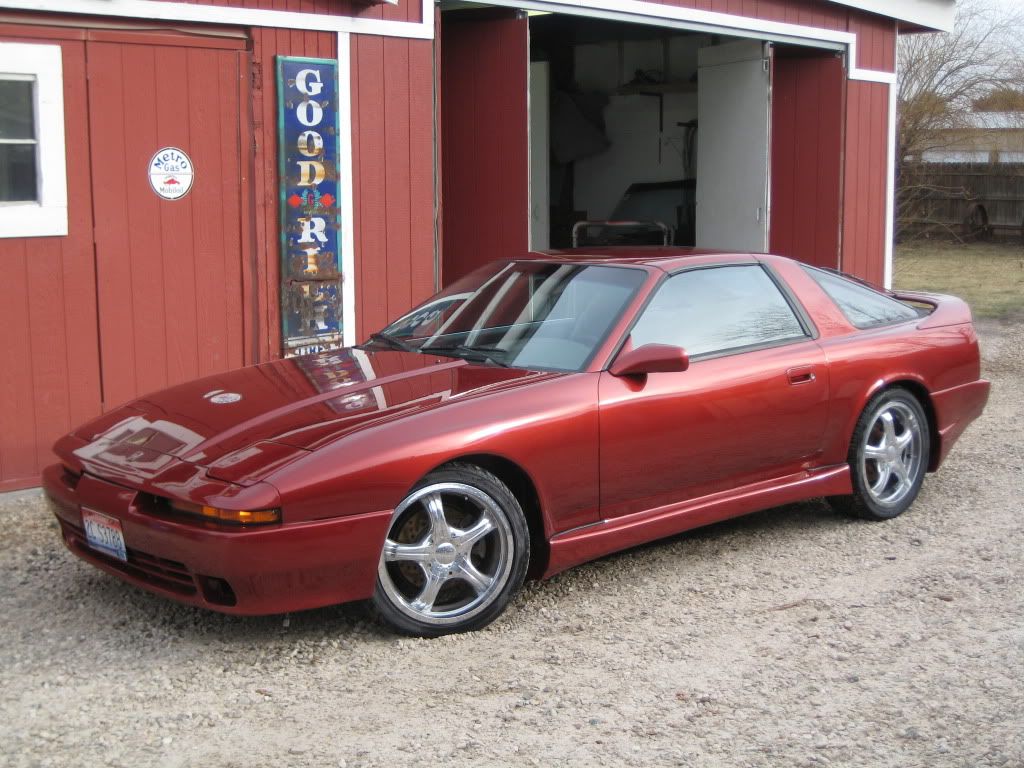
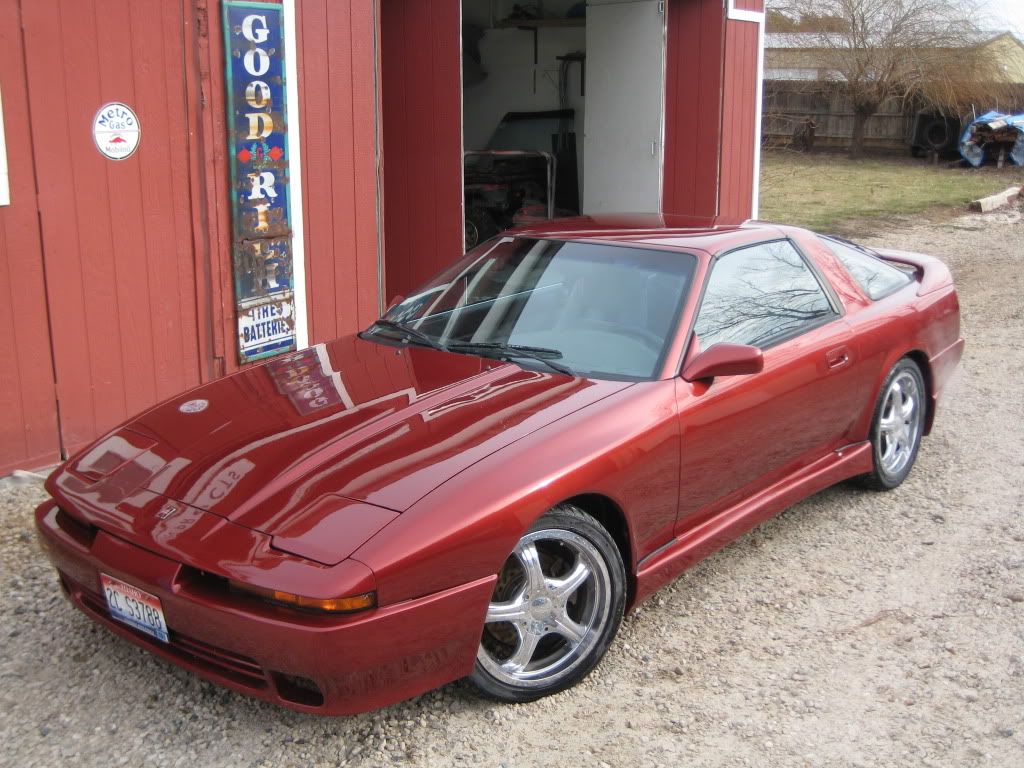
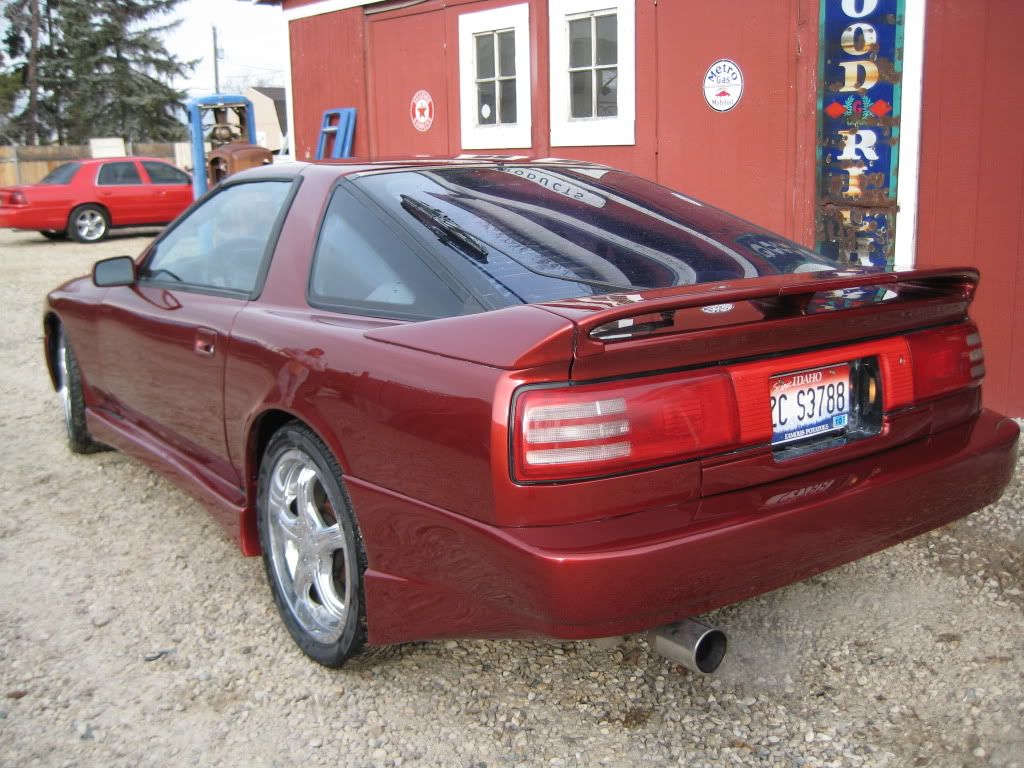
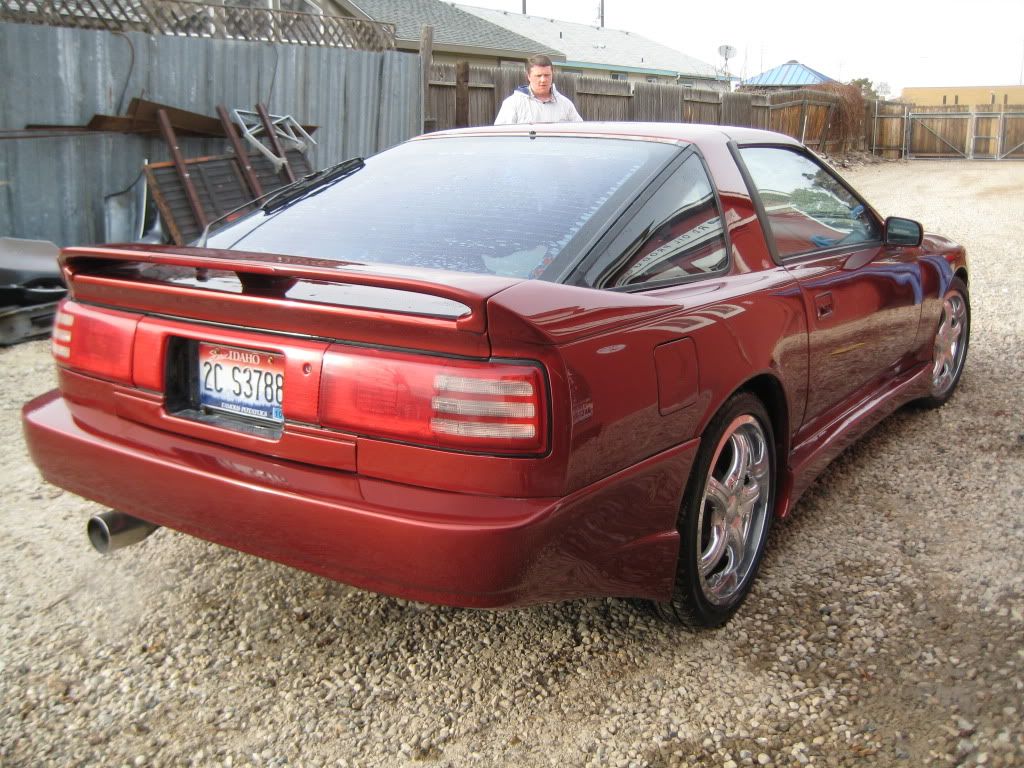
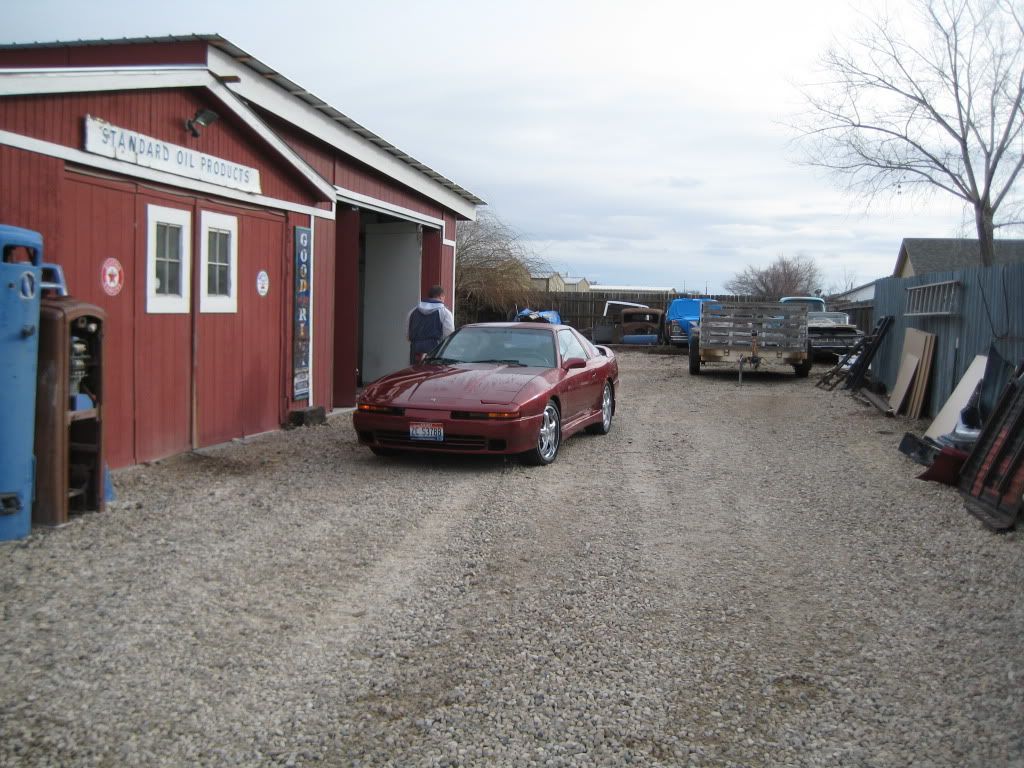
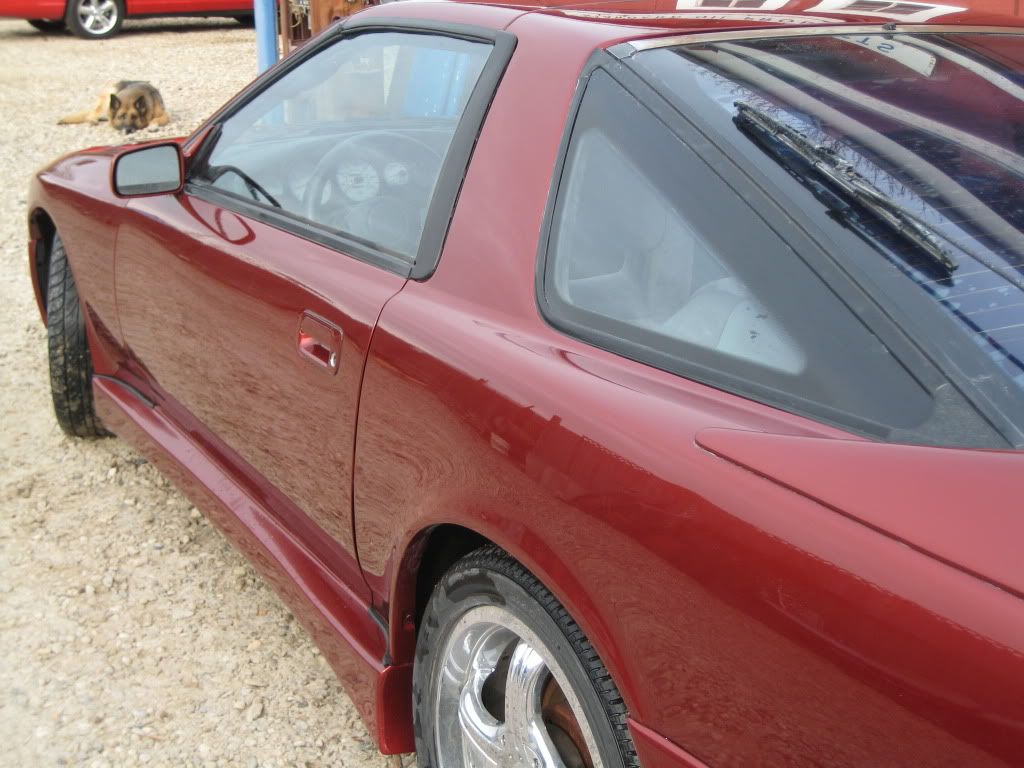
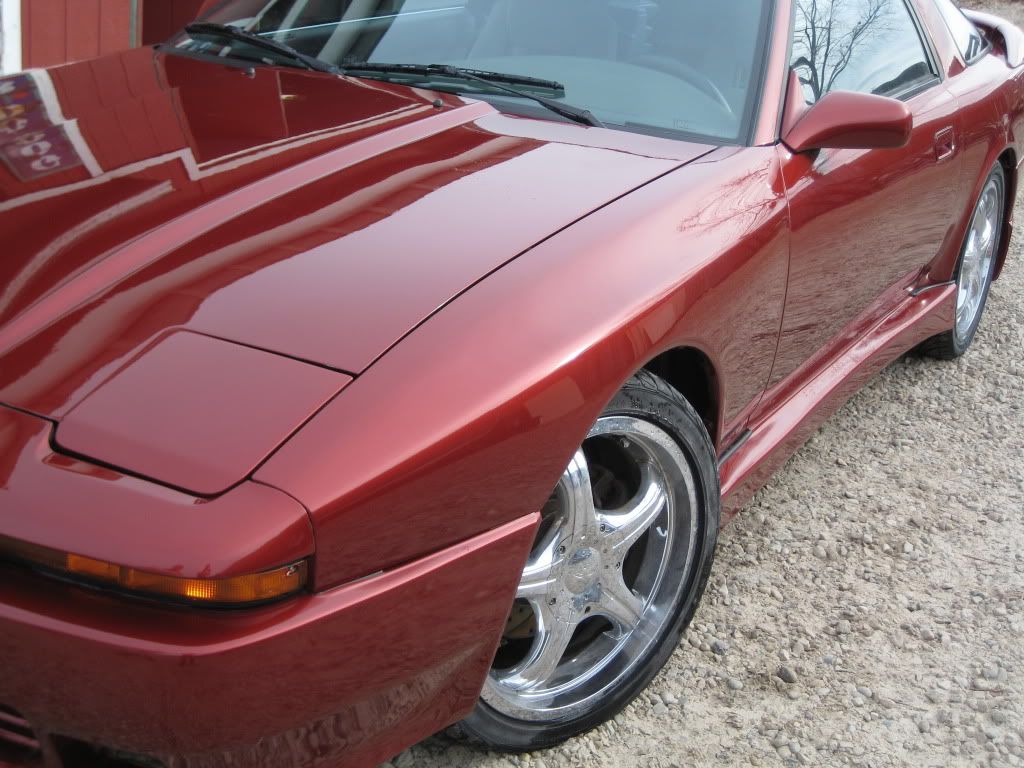
What do you think? Now I need to find some fog lights and I think I will swap over to 89+ front blinkers.
I'm still playing with LED arrangements for the taillights. I made a circular design, but in order to avoid the center diffuser insert I made them pretty small. I don't really like the way they turned out, I think I will just go with a horizontal bar design, but here are some pics of what I did:
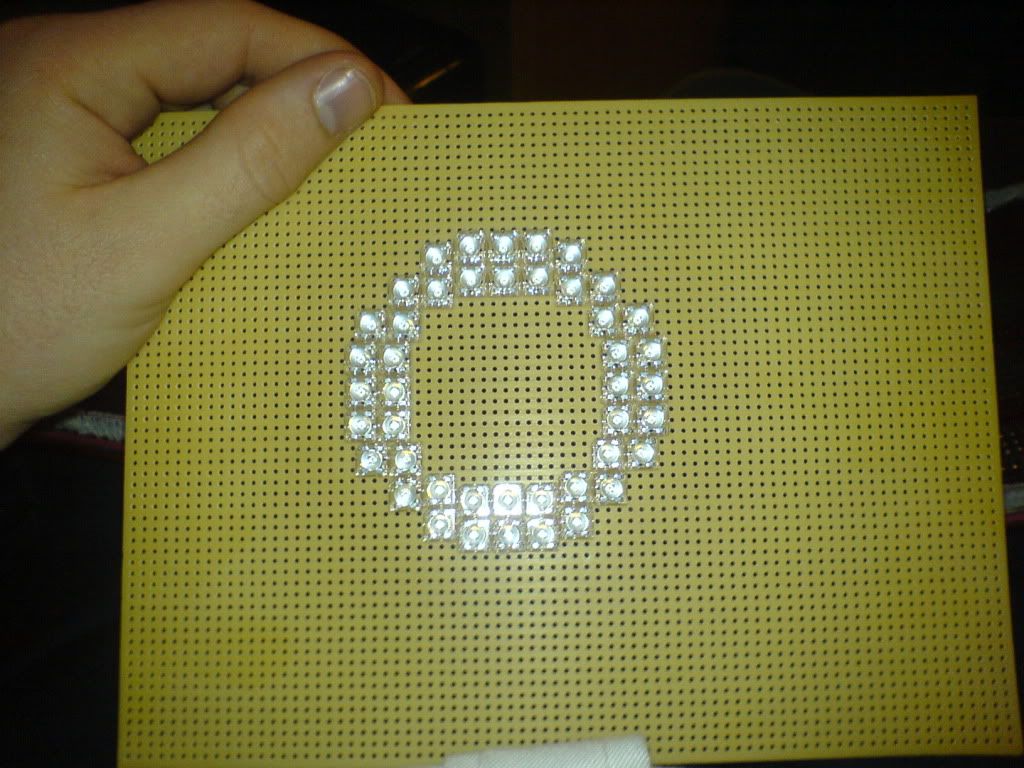
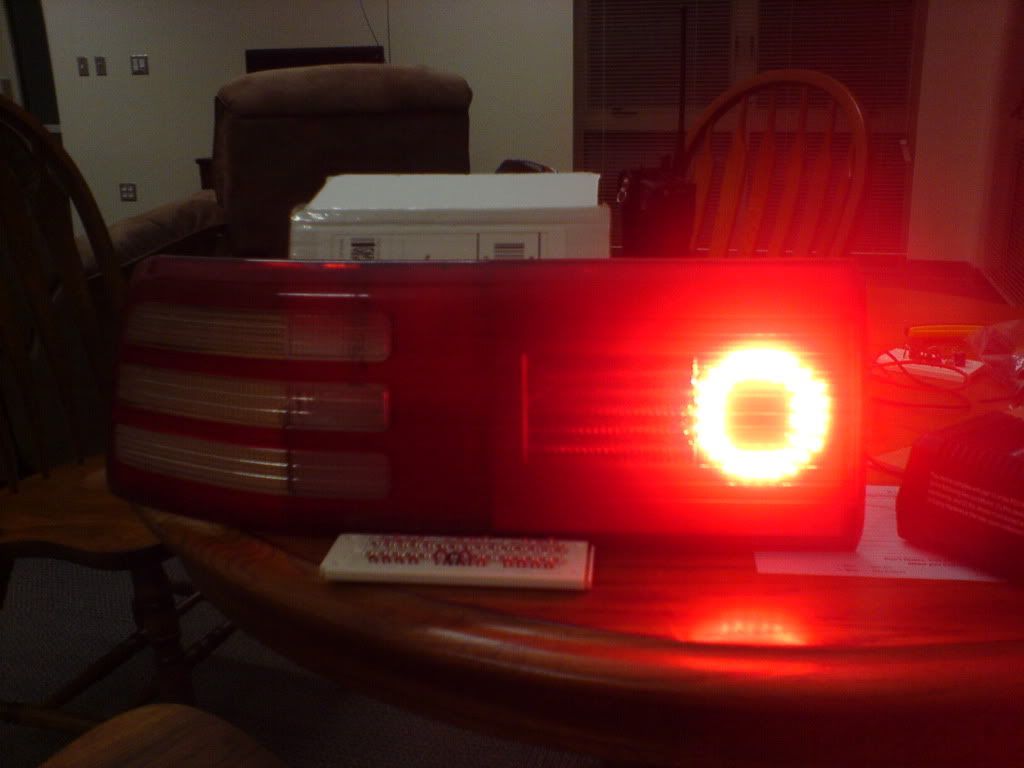

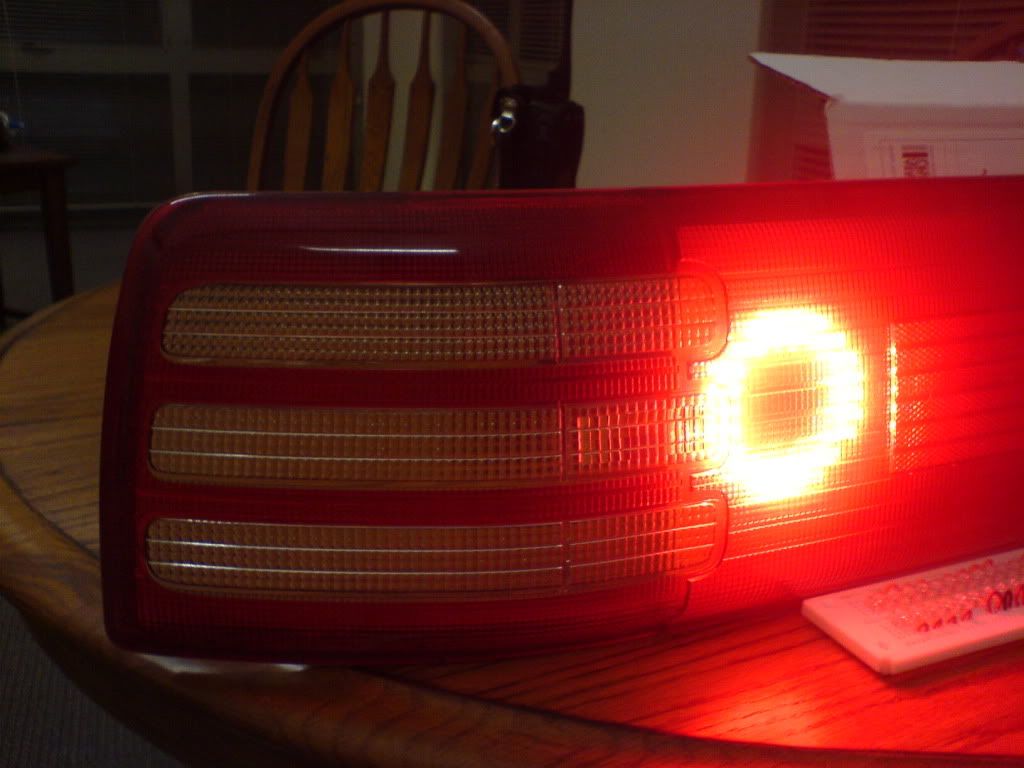
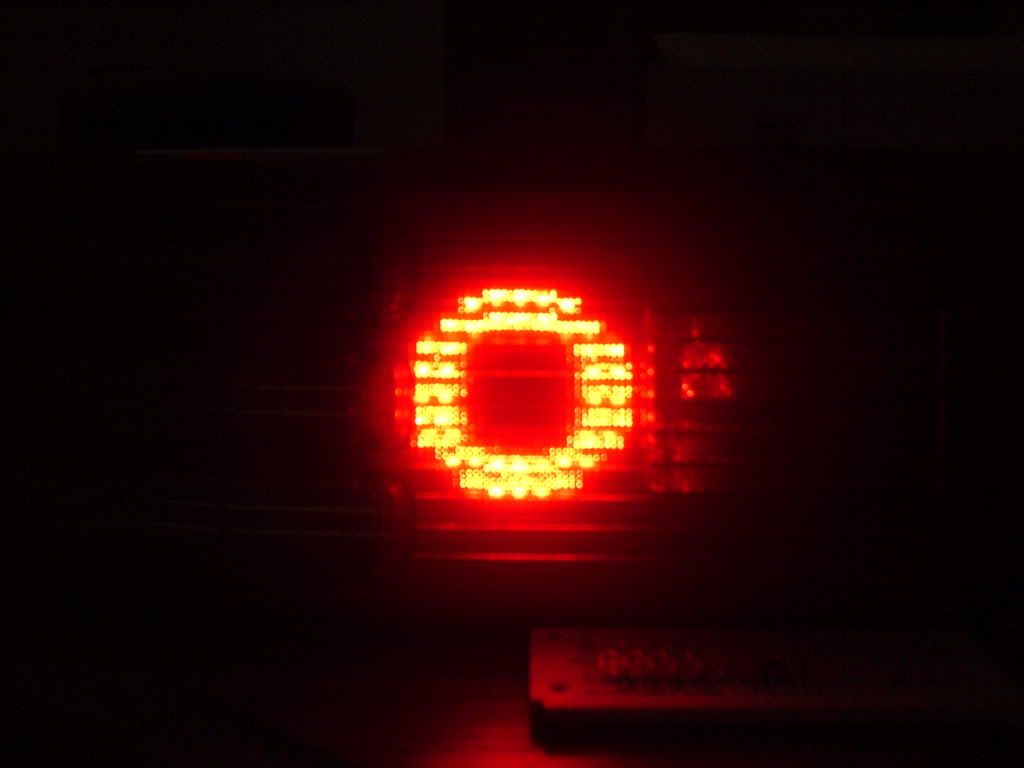








What do you think? Now I need to find some fog lights and I think I will swap over to 89+ front blinkers.
I'm still playing with LED arrangements for the taillights. I made a circular design, but in order to avoid the center diffuser insert I made them pretty small. I don't really like the way they turned out, I think I will just go with a horizontal bar design, but here are some pics of what I did:






to switch to 89+ signals you need to replace your header panel support, otherwise the backs of the signals will hit the mounts...
I'd say source a set of pre 89 euro signals and run them the way Rodel, Duane and myself (man I'm way out of their car-league) have...
I'd say source a set of pre 89 euro signals and run them the way Rodel, Duane and myself (man I'm way out of their car-league) have...
I'm not caring much for the rims, but the rest of the Supra looks amazing. I agree, you definitely need to get the 89+ corner markers and fogs. How much of a PITA is it to do the LED conversion? What are you using as a guide in how to do it?
RazoE;1515873 said:to switch to 89+ signals you need to replace your header panel support, otherwise the backs of the signals will hit the mounts...
I'd say source a set of pre 89 euro signals and run them the way Rodel, Duane and myself (man I'm way out of their car-league) have...
Pre-89 Euro? Ok, thanks for the tip!
honestabe;1515891 said:I'm not caring much for the rims, but the rest of the Supra looks amazing. I agree, you definitely need to get the 89+ corner markers and fogs. How much of a PITA is it to do the LED conversion? What are you using as a guide in how to do it?
Yes, those rims are a craigslist special. When I recover financially from the bodywork I am planning on new rims.
As far as the LEDs, I'm having a great time with that project, actually. I'm not using a guide, I'm just figuring it out as I go, reading lots of books. It helps that I don't have any strict timeline. I may do a writeup when I'm finished, if there's any demand for one, but the concepts are fairly straightforward and for those who don't want to build the components from scratch, most are available to buy online.
For example, the easiest way to have two different brightness levels (brake light and running light) is to use a Pulse Width Modulator (PWM). I built one from scratch because I was curious and I wanted to know how it worked, but I'll probably buy and use a prepackaged one just because it will be better engineered and more durable.
Mine:
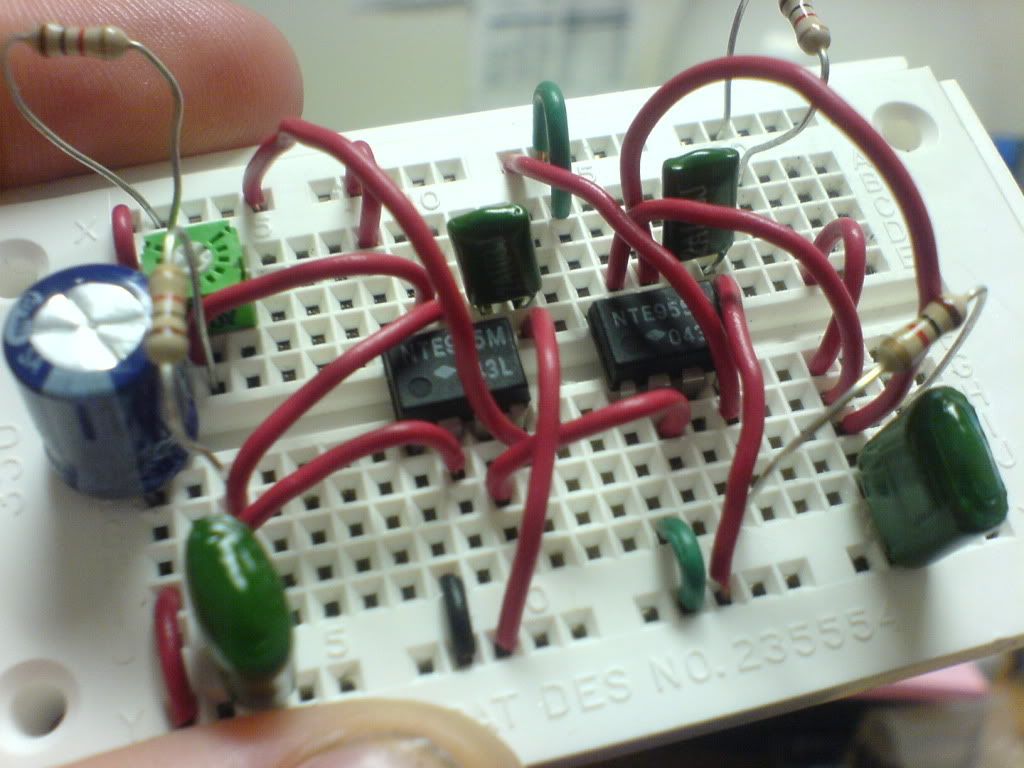
Online for $15 (superbrightleds.com):
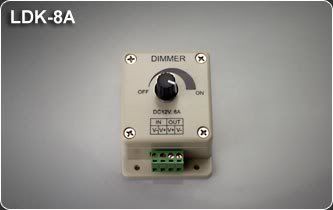
Supras are a little easier because the turn signals are different lights that the brake lights. So only the brakes need a PWM attached, the turn signals and reverse lights don't need one. The one other component that you will need for all your lights is a Voltage regulator. Since the voltage coming from the battery is constantly changing, you need a buffer so that you don't send more power to the LEDs than you plan to and damage them. That sounds complicated but its really not, it's just one little component. This is a voltage regulator:
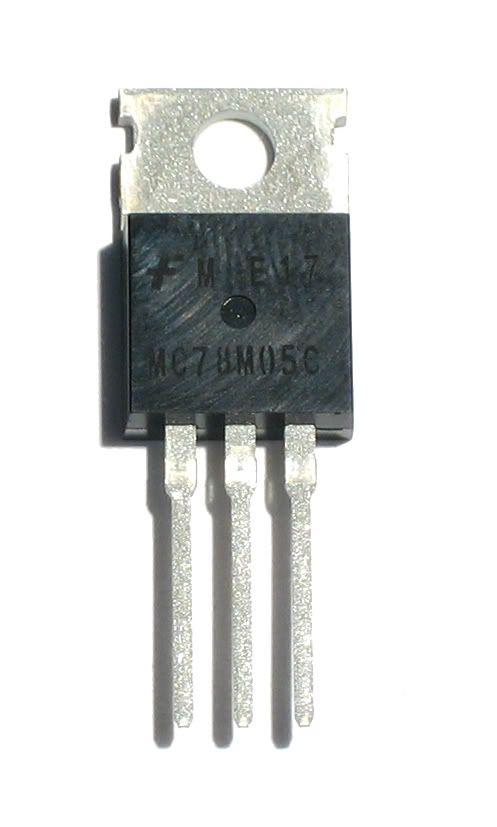
Then you just design your LEDs using parallel runs of LEDs in a series. For those that are allergic to math, there are lots of circuit calculators online that make it really easy. There's a little more to it, but those are the basic things you need to get started....
sweet! I have a spare set of pre-89 tails that I want to do this with, maybe this summer if I feel like it. Thanks
I'm surprised you didn't shave the emblem off the nose. I wish I could get a smoking deal like you did.
Get a lip!  then paint to match then your exterior would look 10/10 -1 for rims lol so a good strong 9!
then paint to match then your exterior would look 10/10 -1 for rims lol so a good strong 9!
Kalos;1513722 said:I'm taking my time with the design and playing with a lot of different options before I do anything permanent. The leds are VERY bright (as we've all been hearing) so I'm quadrupling the value of the resistors I use in each series and it still may be too bright for road use.
Nice results. However I recommend only using your PWM circuits to dim your LED's and not run too much resistance to dim them, because you will run the risk of uneven lighting between the arrays/groups of LEDS, as some LEDS may emit more or less lumens at currents too far below their recommended rating.

